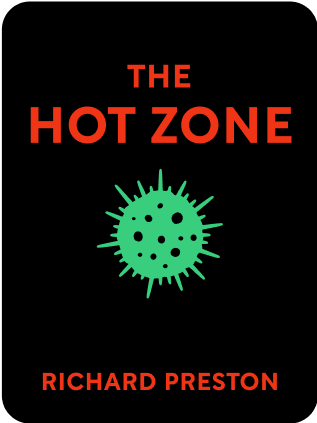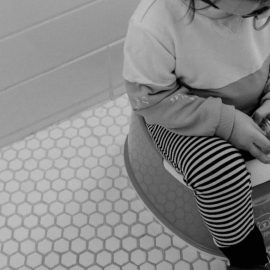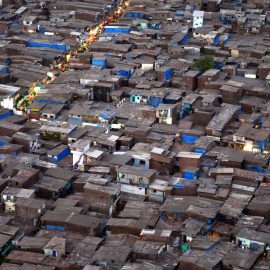

This article is an excerpt from the Shortform summary of "The Hot Zone" by Richard Preston. Shortform has the world's best summaries of books you should be reading.
Like this article? Sign up for a free trial here .
Who are The Hot Zone characters? What does each character do in the book?
The Hot Zone characters are mainly scientists, researchers, doctors, or patients. Many people contributed to researching Ebola and containing outbreaks.
Check out the list of major The Hot Zone characters below.
List of The Hot Zone Characters
This list of The Hot Zone Characters is separated into two segments: one for doctors, scientists, and researchers who played a key role in studying or containing the virus, and patients who contracted the disease.
Doctors and Scientists
These The Hot Zone characters are the doctors, scientists, and researchers who identified the outbreaks, treated patients, or researched the disease.
Nancy Jaax
One researcher in Johnson’s Ebola experiments was Major Nancy Jaax, an army veterinarian who was training in veterinary pathology. When monkeys died in the experiment, Jaax’s job was to find out what had killed them—essentially confirming that Ebola was the cause of death.
Jerry Jaax
Dalgard decided to allow the Army into the monkey house to clear out one of the rooms.
Peters tapped Nancy Jaax’s husband, Colonel Jerry Jaax, to lead the mission into the Reston facility. Jerry Jaax was the chief of USAMRIID’s veterinary division. Although he had no experience with extreme biohazard agents, he and his team knew well how to handle monkeys.
Jerry Jaax conferred with Johnson about how to approach the mission. They’d have to be extremely careful while sterilizing Reston to prevent the virus from escaping and spreading.
In 1983, a U.S. Army civilian scientist and Ebola expert named Eugene Johnson led research on the Ebola and Marburg viruses. Johnson and his team infected monkeys with Ebola Zaire, then gave them various drugs in hope of finding one that either treated or cured the virus.
Johnson conducted his experiments at the United States Army Medical Research Institute of Infectious Diseases (USAMRIID) at Fort Detrick, Maryland. The work at USAMRIID focused on fighting viruses and bacteria—whether weaponized or naturally occurring—by developing vaccines and studying how to contain outbreaks.
Colonel Peters
Jahrling alerted Colonel Clarence Peters, the chief of USAMRIID’s disease-assessment division. Peters, Jahrling, and Geisbert considered the possibilities:
- Could these samples have been contaminated by another hot agent in USAMRIID’s lab, meaning the virus hadn’t been in the monkeys at Reston?
- If a Marburg-like virus was at Reston, could Dalgard be infected?
Peters was alarmed but cautious. Announcing that Marburg or Ebola had appeared in a Virginia suburb outside Washington, DC would cause panic, so they had to be 100 percent positive. Geisberg collected more samples from the monkey liver, and he captured electron-microscope photos that convinced Peters that it was, indeed, a filovirus.
Peter Jahlring
Peter Jahrling, a civilian virologist at USAMRIID. Dalgard believed the disease killing these monkeys was simian hemorrhagic fever (SHF), which was fatal for monkeys but didn’t affect humans. After some testing, Jahrling tentatively agreed.
When Dalgard got the verdict from USAMRIID, he killed the rest of the monkeys in Room F, in order to stop the disease from spreading to monkeys in other rooms.
Dan Dalgard
When the company’s veterinarian, Dan Dalgard, dissected the corpses, he found the monkeys’ spleens were swollen and there was blood in their intestines. Seeking a second opinion, Dalgard sent samples from the monkeys to a virologist at the United States Army Medical Research Institute of Infectious Diseases (USAMRIID), which developed vaccines and studied how to contain outbreaks from weaponized or naturally occurring biological threats.
Richard Preston
Four years after Ebola Reston hit the monkey house, the author, Richard Preston, took his own journey to Kitum Cave. Preston wanted to look around the cave, where the subject of all his research presumably originated.
When he arrived near Kitum Cave, he set up camp in the same area where Charles Monet had camped on New Year’s Eve, 13 years earlier.
The Hot Zone Patients
These The Hot Zone characters are patients that appeared in the book as people who were identified as being early hosts for the virus, and possible spreaders or the outbreak.
Charles Monet
In 1980, Charles Monet, a French expatriate living in Western Kenya, spent New Year’s Day exploring Kitum Cave with a friend. A week later, he began getting sick.
Mayinga
Meanwhile, in Kinshasa, a nurse from Ngaliema Hospital who helped care for Sister M. E. became sick.
Despite her symptoms, the nurse, named Mayinga, spent two days walking through Kinshasa. During those two days, she waited in line at the Zairean foreign ministry, took taxis, visited two hospitals, and sat in crowded waiting rooms.
Most likely, Mayinga knew she’d contracted the virus but was in denial. She visited the foreign ministry in hopes of getting a travel permit before she became visibly sick. Mayinga’s denial also explains why she didn’t initially seek treatment at her hospital, where the staff knew her and would have recognized her symptoms.
Peter Cardinal
In September 1987, a 10-year-old Danish boy died at Nairobi Hospital after traveling around Kenya with his parents and sister. The boy, known as Peter Cardinal, had symptoms that included:
- Skin turning blue with red spots, which eventually turned into large bruises
- Skin nearly separating from the tissue underneath it, as a result of blood pooling there
- Mucus in his lungs that made it difficult to breathe
- Bleeding around his brain
Johnson, who ran the Ebola experiments at the USAMRIID, infected monkey cells with a sample of the boy’s blood. The monkey cells quickly exploded and were destroyed. The same thing happened to guinea pig cells, which meant the virus was adaptable to different species.
You can use this list of The Hot Zone characters to keep track of the many patients and their roles in the book.

———End of Preview———
Like what you just read? Read the rest of the world's best summary of Richard Preston's "The Hot Zone" at Shortform .
Here's what you'll find in our full The Hot Zone summary :
- The many different strains of Ebola, including the deadliest kind with a kill rate of 90%
- How scientists unraveled the mystery of a new strain of Ebola
- How Ebola could become airborne, becoming one of the deadliest viruses known






